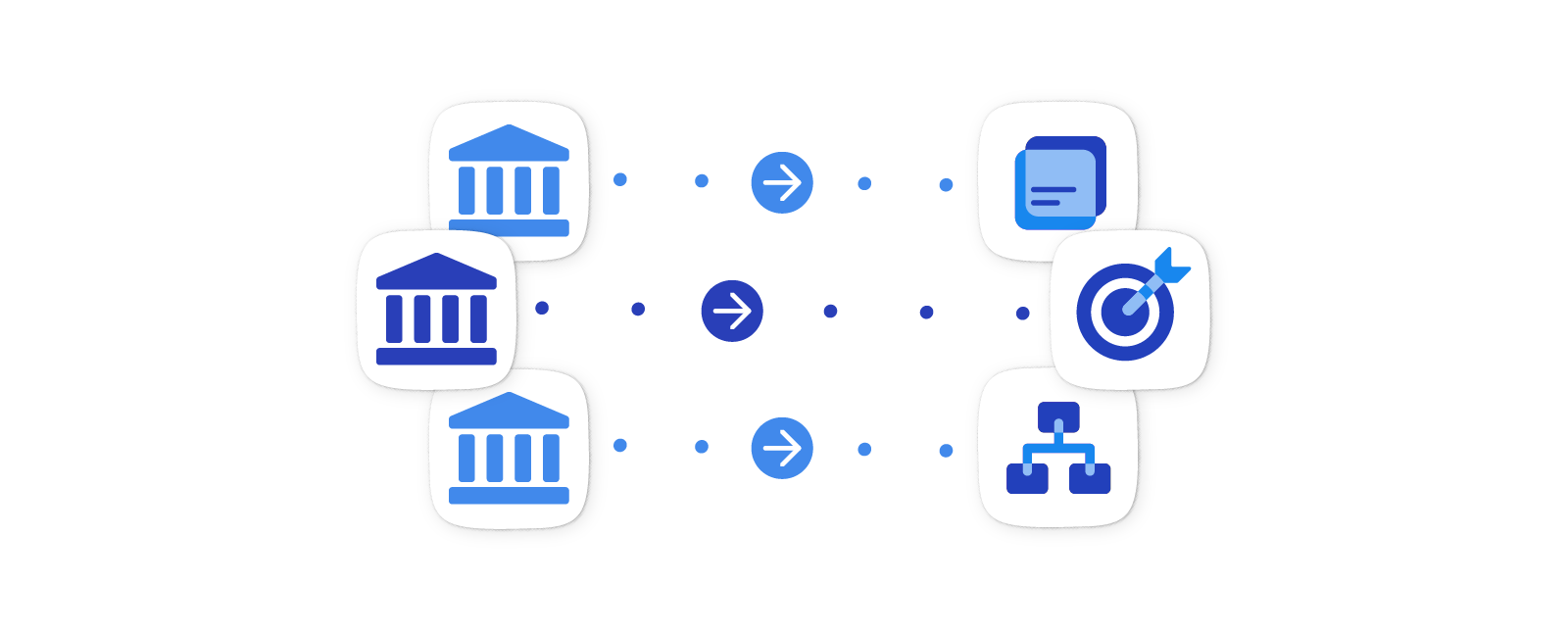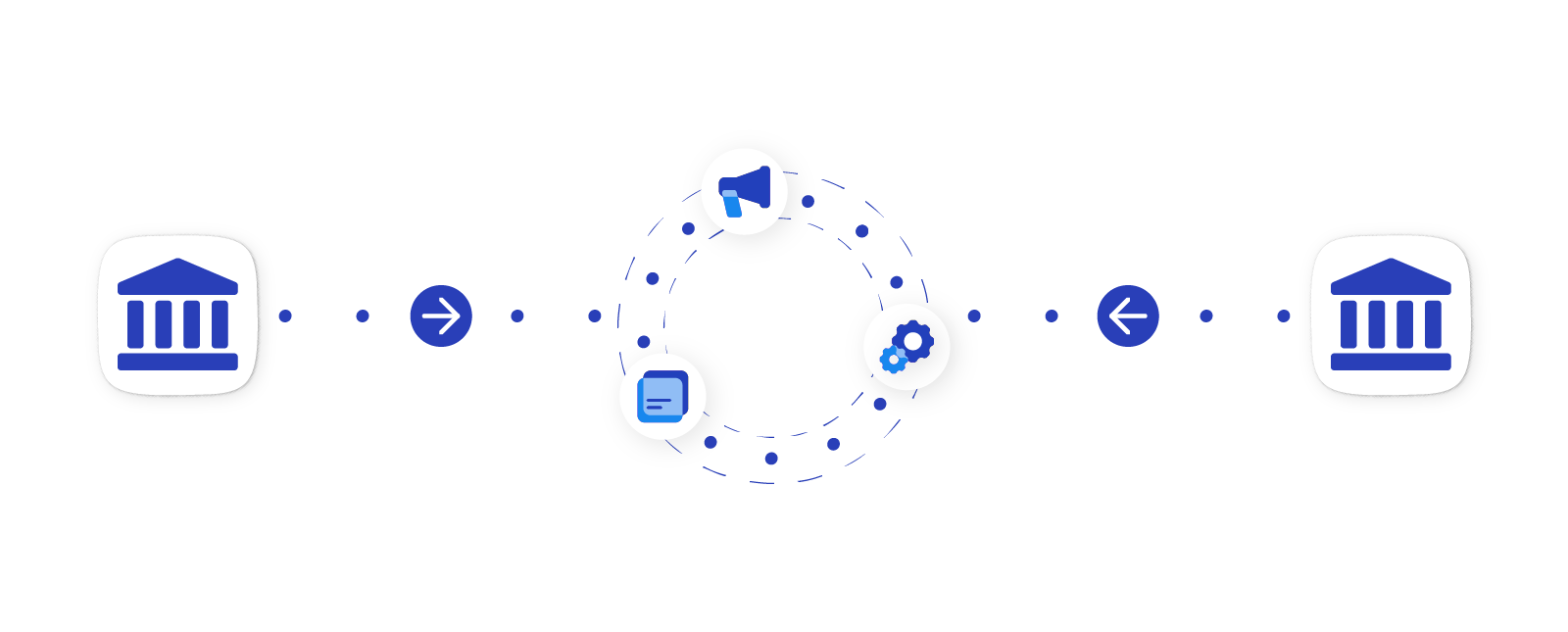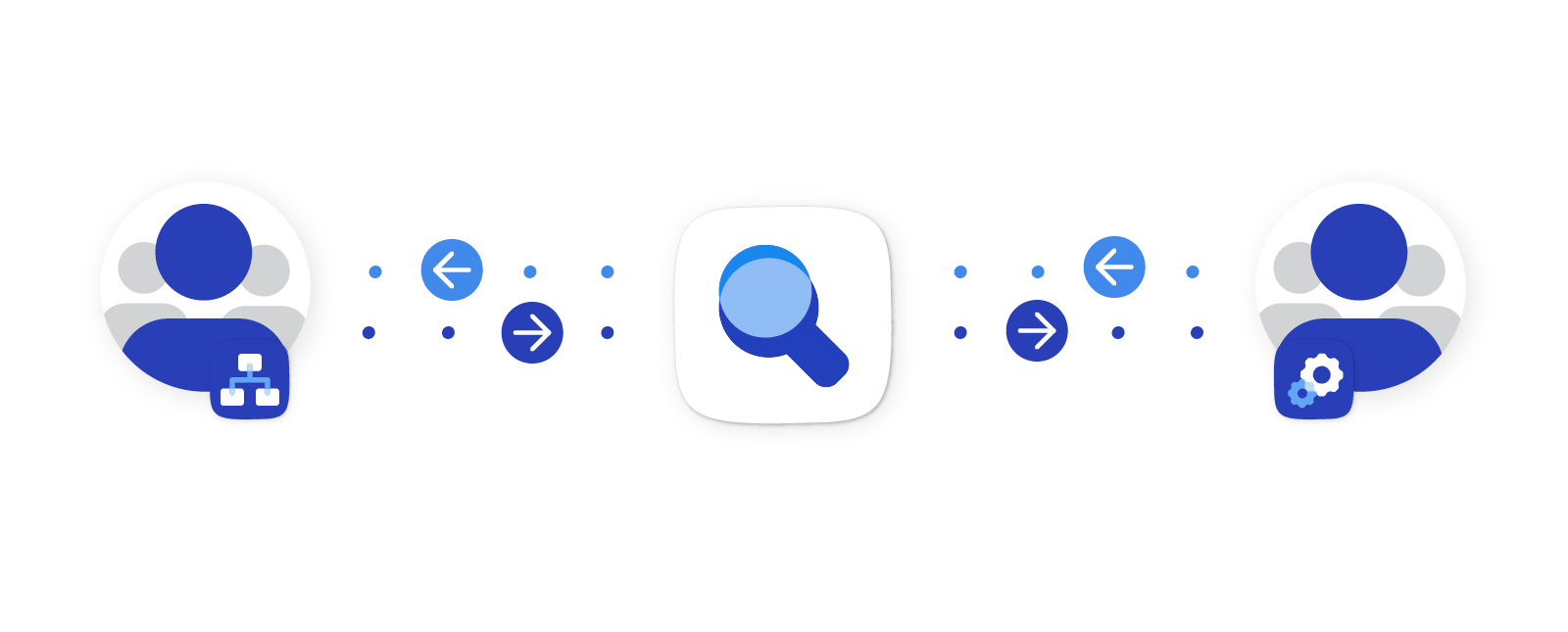As the business landscape grows increasingly complex, organizations face the daunting task of keeping up with change and maintaining a competitive edge.
In this article, we’ll delve into a powerful strategy helping companies thrive in this dynamic landscape. We’ll explore the foundations of enterprise agility and offer insights into the mindset and practices that enable organizations to adapt, innovate, and respond effectively to market shifts, customer demands, and emerging technologies.
We’ll also discuss the benefits of embracing enterprise agility, including enhanced speed-to-market, customer satisfaction, employee engagement, and organizational resilience.
Join us as we uncover the secrets behind enterprise agility and learn how your organization can harness its potential to drive long-term success and growth.
What Is Enterprise Agility?
Getting ahead of the market has never been more important. A strategy for enterprise agility must be in place for large organizations to stay competitive. It helps organizations rapidly adjust to address emerging customer needs, capitalize on technological advancements, and respond quickly and efficiently to changing market conditions while maintaining high performance and quality.
Here are some key components of enterprise agility:
Flexibility
Flexibility lies at the heart of agile enterprises. It equips them to easily adapt and respond to new situations, shifting strategies, and evolving requirements. Agile organizations are skilled at pivoting their strategies and modifying their processes to meet changing needs to stay ahead of the curve.
Additionally, they cultivate a culture of openness to change, fostering a growth mindset that encourages exploring new ideas, approaches, and technologies. By prioritizing flexibility, agile organizations can continuously improve their operations, products, and services and remain relevant and responsive to customer needs and expectations.
Responsiveness
Agile organizations are adept at gathering and analyzing information from various sources, enabling them to make informed decisions and take swift action when needed. They prioritize open communication and collaboration to ensure that all stakeholders are aligned on goals and priorities and can respond in a timely manner to changing circumstances. This responsiveness allows them to anticipate customer needs and expectations and proactively innovate and improve their products and services.
Collaboration
Agile organizations recognize the value of cross-functional collaboration, information sharing, and collective decision-making to facilitate faster, more informed decision-making. By breaking down silos and promoting open communication channels, agile enterprises can leverage their workforce’s diverse skills, knowledge, and perspectives to drive innovation, productivity, and overall performance.
Additionally, agile methodologies emphasize teamwork, transparency, and continuous feedback among cross-functional teams so organizations can respond more effectively to emerging opportunities, challenges, and risks.
Continuous Improvement
Continuous improvement is a critical component of enterprise agility, which reflects the commitment of agile enterprises to the ongoing refinement and enhancement of their products, services, and operations. They prioritize regular feedback, reflection, and learning, cultivating a culture of growth and development that encourages innovation and creativity. They adopt iterative processes that enable constant assessment, adjustment, and improvement to remain responsive and adaptable to evolving business needs and customer expectations.
Customer-Centricity
Customer-centricity emphasizes prioritizing customer needs and satisfaction in all aspects of operations. Agile enterprises actively seek customer feedback to develop and refine their products and services. By striving to understand their customers’ perspectives, preferences, and pain points, they can deliver greater value and enhance the overall customer experience. This customer-focused approach not only fosters stronger customer relationships but also drives innovation and ensures that the organization remains relevant and competitive.
Decentralized Decision-Making
Decentralized decision-making empowers teams and employees to make decisions at the local level, leading to a greater sense of ownership and accountability. By distributing decision-making authority, agile organizations can accelerate decision-making, eliminate bottlenecks, and enhance adaptability.
This approach fosters a more responsive and nimble organization, where employees are encouraged to take initiative and collaborate to solve problems, seize opportunities, and drive innovation.
Adaptability to Technology
Agile organizations recognize the importance of technology in driving innovation and staying competitive. They are proactive in adopting new technologies and prioritize technology integration, using modular and scalable architectures to ensure their technology stack remains aligned with their business needs and goals.
Additionally, agile organizations invest in ongoing employee training and development to ensure they have the skills and knowledge to leverage new technologies effectively.
Organizational Culture
Agile organizations foster a culture of trust, openness, and innovation, where employees are encouraged to take risks, experiment, and learn from their mistakes. This culture emphasizes continuous improvement and growth and drives a mindset of agility and adaptability throughout the organization. With a positive and inclusive culture, they can attract and retain top talent while driving engagement, productivity, and creativity among their workforce.
Ultimately, by embracing enterprise agility, organizations can better navigate the complexities of the modern business environment, capitalize on opportunities, and remain competitive in constant change.
What Benefits Do Agile Enterprises Receive?
Agile enterprises benefit from adaptability, responsiveness, and an innovative mindset.
One of their most notable advantages is faster time to market. Streamlined processes, iterative development, and cross-functional collaboration enable them to quickly develop and deliver new products and services, which allows them to seize emerging opportunities and stay ahead of competitors.
Furthermore, agile organizations achieve increased customer satisfaction by centering their efforts around customer needs and actively incorporating feedback into their products and services, leading to higher customer loyalty and positive word of mouth.
Improved adaptability to change is another key benefit, which enables agile organizations to pivot strategies, scale operations, and adjust processes with minimal disruption, ensuring continued competitiveness. Additionally, an innovative culture within agile enterprises encourages employees to take risks and share ideas, resulting in the development of novel products, services, and business models that can drive growth and differentiate the organization from competitors.
Operational efficiency is also enhanced as they continuously optimize their processes, tools, and practices, leading to cost savings, increased productivity, and better overall performance. Decentralized decision-making and empowered teams contribute to improved decision-making so the organization can respond more quickly to emerging opportunities and challenges.
Agile enterprises often boast a more dynamic, positive, and collaborative work environment, which leads to higher levels of employee satisfaction, engagement, and retention. This not only helps attract top talent but also reduces turnover-related costs.
Finally, enterprise agility provides resilience in the face of uncertainty as these organizations are better prepared to manage risks and uncertainties. This enables them to recover from setbacks and thrive in volatile environments, strengthening their position in the ever-changing business landscape.
How Can Agile Architecture Help Enterprises?
Agile architecture is crucial in helping enterprises become more adaptive, responsive, and efficient. By implementing a flexible, scalable, and modular architectural approach, they can better accommodate changes in requirements, technologies, and market conditions. Agile architecture enables them to develop and deploy systems and applications more quickly to capitalize on emerging opportunities and maintain competitiveness.
One of the key ways agile architecture helps enterprises is by promoting a culture of collaboration and communication between development teams, operations, and other stakeholders. This cross-functional approach allows for rapid decision-making, knowledge sharing, and problem-solving, ultimately improving efficiency and innovation. By facilitating continuous integration and delivery, agile architecture ensures that software can be released more frequently, with fewer errors and faster feedback from end users.
Additionally, agile architecture supports adopting new technologies and industry standards that allow organizations to stay current with the latest developments and best practices. It enhances their technological capabilities, increases their productivity, and improves their overall performance. Moreover, agile architecture encourages using modular and reusable components, reducing development time, and ensuring that systems can be easily maintained and extended over time.
By focusing on resilience and scalability, agile architecture allows enterprises to handle increased demand, sudden changes, or unforeseen challenges without significant disruption to their operations. This is particularly valuable today as organizations must quickly adapt to new market conditions and customer needs.
Thus, agile architecture helps enterprises by enabling greater flexibility, faster development and deployment, improved collaboration, and increased adaptability to new technologies and industry standards. With an agile architectural approach, organizations can better navigate the complexities of the modern business environment.
Where Do I Start When Trying to Foster Business Agility?
Starting the journey to business agility may seem daunting. However, organizations can gradually cultivate an agile environment by breaking it down into smaller steps and focusing on key areas.
Begin by assessing the current state of the organization’s processes, culture, and structure to identify areas for improvement. Establish clear goals related to business agility, which are aligned with the organization’s overall strategy and vision. Developing a roadmap with key steps and milestones, including adopting agile frameworks, organizational changes, and new technologies, will provide a clear path forward.
Promoting a culture of collaboration and communication is crucial as open communication and cross-functional collaboration among teams, departments, and stakeholders foster a dynamic and innovative environment. Empower teams through decentralized decision-making and encourage ownership and accountability for faster, more adaptable decisions. Prioritize customer-centricity to ensure the organization remains responsive to market demands and customer expectations and invest in continuous learning and development to help employees thrive in an agile environment.
Additionally, monitor progress using relevant metrics and key performance indicators (KPIs) to assess the organization’s performance, identify areas for improvement, and adjust strategies and tactics accordingly. Embracing continuous improvement and learning from successes and failures will help adapt to the changing business landscape. Lastly, celebrate successes and recognize achievements to foster a positive organizational culture that motivates continued improvement.
By following these guidelines, organizations can gradually foster business agility, enhancing their competitiveness and driving long-term success.
What’s the Best Way to Implement Agile Enterprise Architecture?
Implementing an agile enterprise architecture involves a thoughtful, iterative, and collaborative approach that balances flexibility with strategic alignment. Start by understanding the organization’s overall goals, strategies, and objectives to ensure the agile architecture supports its vision. Engage stakeholders from various departments, including IT, business, and operations, to foster cross-functional collaboration and gain insights into their needs and priorities.
Next, adopt a modular and incremental approach to design, breaking down the architecture into smaller, manageable components that can be developed and integrated iteratively. This allows for rapid adaptation to changing requirements and technologies while making it easier to maintain and scale the architecture over time. Use agile frameworks such as Scrum or Kanban to manage the development process and encourage collaboration, transparency, and continuous improvement.
Emphasize the importance of continuous integration and delivery (CI/CD) practices to ensure that architectural changes can be tested, validated, and deployed with minimal organizational disruption. This reduces the risk of errors, accelerates deployment, and enables faster feedback from end users.
Moreover, invest in tools and technologies that support agility and collaboration, such as version control systems, project management tools, and communication platforms. These can streamline processes, improve visibility, and facilitate coordination among teams and stakeholders.
Ensure the agile enterprise architecture is aligned with industry standards and best practices while remaining flexible to accommodate new technologies, methodologies, and innovations. Continuously monitor and evaluate the performance of the architecture using relevant metrics and KPIs to identify areas for improvement and make data-driven decisions.
Finally, cultivate a culture of learning and innovation within the organization, encouraging teams to experiment, take risks, and learn from failures. This mindset promotes continuous growth and improvement so that the agile enterprise architecture remains relevant and effective despite changing business needs and market conditions.
Are There Any Downsides to the Agile Model for Enterprises?
While the agile model offers many advantages, it also comes with potential downsides that organizations should be aware of before adopting it.
One of its main challenges is long-term planning as agile methodologies focus on iterative development and short-term goals, which make it hard for organizations to allocate resources, predict outcomes, and plan for future growth effectively.
Another downside is the potential for scope creep as agile’s emphasis on flexibility and adaptability can sometimes lead to projects expanding beyond their initial objectives. This can result in increased costs, delays, and reduced focus on the project’s core goals.
Additionally, the agile model relies heavily on effective communication and collaboration among team members. In larger organizations or those with dispersed teams, maintaining consistent communication and collaboration can be challenging, potentially leading to miscommunication, misunderstandings, and decreased efficiency.
Agile methodologies also require a high level of commitment and buy-in from all stakeholders for successful implementation. If the organization’s culture is resistant to change or not fully supportive of agile principles, the adoption and effectiveness of the agile model are hindered.
Furthermore, agile approaches may not be suitable for all types of projects or industries, particularly those with strict regulatory requirements, complex dependencies, or where detailed documentation is essential.
Finally, the success of agile methodologies is highly dependent on the skill and experience of the team members involved. Organizations adopting agile may face challenges in finding and retaining the right talent with the necessary expertise in agile principles and practices. Training and development may be required to ensure they can effectively contribute to agile projects, and the associated costs should be considered.
Although the agile model offers several benefits, enterprises must carefully consider its potential downsides and challenges before implementing it. By understanding the limitations and addressing potential issues, they can better determine if it fits their specific needs and goals.
Final Thoughts RE: Enterprise Agility
As organizations face unprecedented levels of disruption and uncertainty, enterprise agility offers a path forward, equipping them to navigate challenges, seize opportunities, and drive long-term success and growth.
With the right strategies and tools, any organization can become more agile and thrive in the dynamic and ever-changing business world.
At Kizen, we can help you develop a comprehensive agile strategy that enables your teams to respond quickly to market shifts, customer demands, and emerging technologies. We have the tools and solutions to help organizations of all sizes and industries to embrace agility, optimize processes, and unlock their full potential. Connect with us on our website, and we’ll schedule a time to chat.
FAQs: Business and Enterprise Agility
Let’s explore some common questions and answers related to business and enterprise agility, including their benefits, challenges, and best practices for implementation.
What makes an enterprise agile?
An enterprise becomes agile by embracing adaptability, flexibility, and a customer-centric mindset, which allows it to respond effectively to changing market conditions, customer needs, and emerging technologies. It prioritizes innovation and experimentation and fosters a dynamic work environment encouraging employees to take risks and learn from failures.
Why is enterprise agility important?
Enterprise agility is important because it enables organizations to adapt rapidly to changing market conditions, customer demands, and emerging technologies, ensuring their continued competitiveness and success. By fostering a culture of collaboration, innovation, and continuous improvement, agile enterprises can quickly develop and deliver new products and services, stay ahead of competitors, and better meet customer expectations. Agility also allows organizations to pivot strategies and operations more effectively, enhancing resilience in the face of uncertainties and risks.
How do you achieve enterprise agility?
Achieving enterprise agility involves adopting agile methodologies, fostering a culture of collaboration and innovation, decentralizing decision-making, and prioritizing customer-centricity.
Start by implementing agile frameworks and promoting open communication and cross-functional collaboration among teams and stakeholders. Empower employees to make decisions at the local level and encourage ownership and accountability. Focus on customer needs and actively incorporate feedback into product development and service delivery.
Continuous learning and development for employees should also be a priority, ensuring they have the skills and knowledge to thrive in an agile environment. Regularly track their progress, and iterate and improve processes, tools, and practices.
What does “architecture” refer to in an agile model?
In an agile model, “architecture” refers to the design and structure of a system or software, encompassing the components, relationships, and principles that guide its development, evolution, and maintenance.
Agile architecture focuses on flexibility, modularity, and incremental development for rapid adaptation to changing requirements and technologies. By emphasizing collaboration, adaptability, and continuous improvement, organizations can develop and deploy systems and applications more quickly, efficiently, and reliably while ensuring they remain responsive to evolving business needs and market conditions.
What are the four main types of enterprise architecture?
The four main types of enterprise architecture, encompassing different aspects of an organization’s structure and processes, are (1) business architecture, which focuses on business strategy, processes, and organizational structure; (2) data architecture, which deals with data management, storage, and accessibility and ensures data consistency and integrity across the organization; (3) application architecture, which involves the design and structure of software applications and addresses their functionality, integration, and scalability; and (4) technology architecture, which encompasses the underlying infrastructure, hardware, and platforms that support data and application architectures.
Together, these provide a holistic view of an organization’s enterprise architecture, guiding its planning, development, and evolution.
What’s the difference between business agility and enterprise agility?
While “business agility” and “enterprise agility” are often used interchangeably, they convey slightly different concepts. Business agility refers to an organization’s ability to adapt rapidly to market changes, customer needs, and emerging opportunities, primarily focusing on processes, strategies, and decision-making.
Enterprise agility, on the other hand, encompasses a broader scope, including not only business processes and strategies but also aspects such as technology, infrastructure, and organizational culture. It highlights the organization’s overall adaptability, responsiveness, and resilience, covering all aspects of its structure and operations, whereas business agility is more specifically concerned with the adaptability of business functions and strategic planning.
What’s an example of business agility?
An example of business agility is a company that quickly pivots its product development strategy in response to changing customer preferences and market trends.
Suppose a software company initially develops a product aimed at a specific industry but discovers through customer feedback and market research that there is a broader demand for a more versatile solution. Embracing business agility, the company rapidly adapts its development process, refines its product features, and repositions its marketing strategy to target a wider audience. This agile response enables it to seize new opportunities, meet evolving customer expectations, and maintain a competitive edge in the market.
What’s the goal of business agility?
The primary goal of business agility is to enable organizations to adapt rapidly and effectively to changing market conditions, customer needs, and emerging opportunities. It aims to enhance an organization’s competitiveness, resilience, and long-term success.













